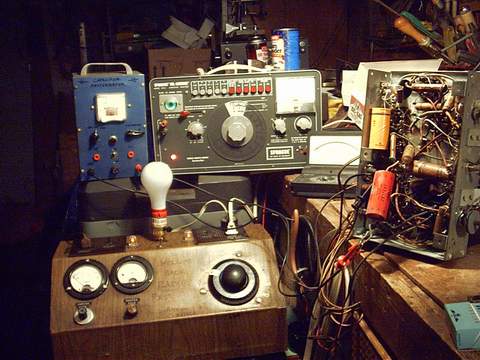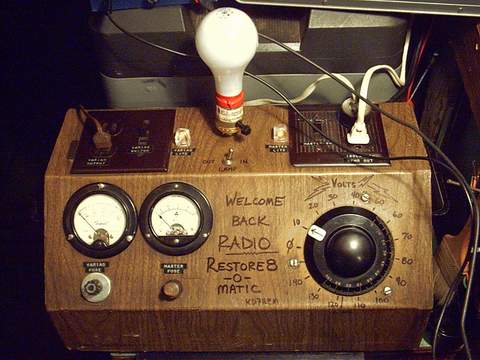This is where the light bulb comes in, if they do short all the current goes to the bulb and doesn't damage other components. Like valuable hard to replace transformers.


| The reason all this is important is that as a set sits for a long period of time, filter capacitors will dry out and/or become lazy and tubes can develop shorts. Capacitors are like rechargeable batteries, if they haven't been charged for a long time, they tend to forget what it's like and they can be shocked and short out. This is where the light bulb comes in, if they do short all the current goes to the bulb and doesn't damage other components. Like valuable hard to replace transformers. |

|